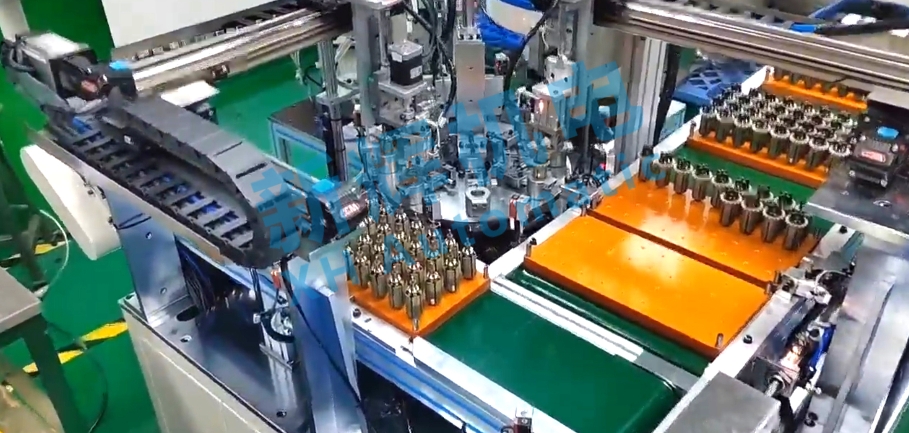How should the motor motor rotor automatic air blower be maintained?
Motor motor rotor automatic air blade machine maintenance can be carried out from the following aspects:
1、Daily inspection
Appearance check
Every day before and after the operation of the equipment, check the shell of the air blades machine for damage, deformation or cracks. If the shell is found to be broken, it may affect the sealing of the equipment, and the shell should be repaired or replaced in time.
Check the surface of the wind blades for debris buildup, such as dust and fibers. These debris may cause the wind blade to become unbalanced, increasing the load on the motor and affecting the heat dissipation effect.
Inspection of connecting parts
Check for loose connection bolts and nuts between the motor, air blades, and other parts. Loose connections may cause vibration and lead to equipment damage. If you find any loose connections, tighten them using the appropriate tools.
Look for strong wire connections and signs of breakage or deterioration. For loose wire connectors, re-insert and make sure the connection is tight. For broken or aged wires, replace them in time to prevent electrical failures such as short circuits.

2、Cleaning
Regularly clean the shell and wind blade
Regularly (e.g. weekly or every two weeks) clean the shell and wind blades of the air blades machine according to the environment and frequency of use of the equipment. For dusty environments, the cleaning cycle should be appropriately shortened.
Use a clean soft cloth or brush to gently wipe the housing to remove dust and dirt. For the air blades, you can use a can of compressed air to blow away dust, or carefully disassemble the air blades and clean them. When cleaning the air blades, avoid using sharp tools to damage the surface of the air blades.
Cleaning the motor and control unit
The heat dissipation of the motor is essential for its proper operation. Regularly clean the surface of the motor, especially the heat sink part of the motor, by using a vacuum cleaner or brush.
For the control unit, such as circuit boards, use electronic cleaner to gently spray on the surface of the circuit board to remove dust and oil, and take care to avoid the cleaner from touching the pins of the electronic components to prevent short-circuiting.
3、Lubrication
Motor bearing lubrication
Motor bearings are key components, good lubrication can reduce friction and wear and prolong the service life of the bearings. According to the instruction manual of the motor, lubricate the bearings regularly (generally every 3 - 6 months).
Use suitable lubricating grease, such as high temperature grease (for environments with high operating temperatures) or general purpose grease. When adding grease, pay attention to the proper amount to avoid excessive grease overflow and contamination of the inside of the motor.
Other moving parts lubrication
If the wind blower has other moving parts, such as transmission gears, pulleys, etc., they also need to be lubricated. For gears, you can use gear oil for lubrication; for pulleys, you can apply the right amount of belt wax on the surface of the belt to increase the friction between the belt and the wheel and prevent the belt from slipping.
4、Regular calibration and testing
Speed and steering calibration
At regular intervals (e.g. every 3 months), calibrate the rotational speed of the wind blower using a professional speed measuring instrument. Ensure that the actual speed of the wind blower matches the set speed, if the speed deviation exceeds the permissible range, you need to check whether there is any problem with the power supply of the motor, the control unit or the transmission part.
Also check that the steering of the air blades is correct. If the steering is wrong, the motor may be wired incorrectly or the control signal is abnormal, which needs to be adjusted in time.
Temperature and vibration tests
Use temperature sensors to periodically measure the temperature of the motor and key components to ensure that the unit is operating within the normal temperature range. If the temperature is found to be abnormally high, the motor may be overloaded, have poor heat dissipation or other faults, requiring further inspection.
Use a vibration tester to check the vibration of the equipment. Under normal circumstances, the vibration amplitude of the equipment should be within a certain permissible range. Excessive vibration may indicate wind blade imbalance, bearing damage or other mechanical problems, the cause should be identified and resolved in a timely manner.
5、Spare parts replacement
Replacement plan for wearing parts
Make a replacement plan for wearing parts, such as bearings, belts, wind blades and so on. Prepare the replacement of spare parts in advance according to the running time of the equipment, the load condition and the service life of the parts.
For example, the service life of bearings may be reduced after a certain number of operating hours. When approaching the service life, consider preventive replacement of bearings even if they have not yet failed.
Precautions for replacement
When replacing spare parts, make sure to use spare parts that meet the specifications of the equipment. For some critical parts, such as motors, it is necessary to re-commission and test them after replacement to ensure that the equipment can operate normally.







